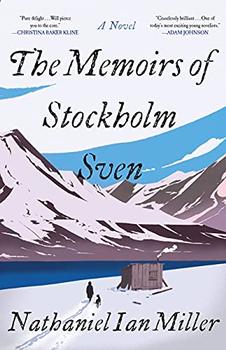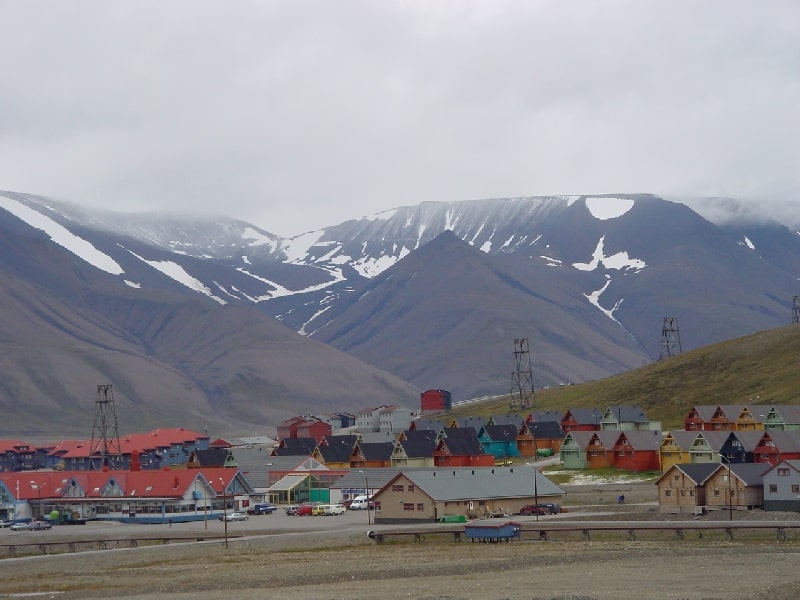Summary | Excerpt | Reviews | Beyond the Book | Read-Alikes | Genres & Themes | Author Bio

This article relates to The Memoirs of Stockholm Sven
 Svalbard, formerly known as Spitsbergen, is a mountainous, snowfield-covered Norwegian archipelago located above the Arctic Circle that provides the primary setting for Sven's adventures in The Memoirs of Stockholm Sven by Nathaniel Ian Miller. As described in the novel, there are three primary seasons in Svalbard: sunny winter, a period that sees an increase in daylight from early March to mid-May; polar summer, a period of milder weather and some weeks of round-the-clock light from mid-May through September; and Northern Lights winter, the darker winter period from early October through February during which the stunning display of the Aurora Borealis becomes visible. November to January marks the peak of what is called "polar night," a time in which there is no sunlight for over two months. It is during this time that Sven chronicles his first arduous apprenticeship with a handful of outsourced trappers tasked with maintaining the vacated mining facilities of British-run Camp Morton in return for unfettered access to the best hunting grounds, then covered in 24/7 darkness, until the end of the miners' hiatus at the start of the sunny winter.
Svalbard, formerly known as Spitsbergen, is a mountainous, snowfield-covered Norwegian archipelago located above the Arctic Circle that provides the primary setting for Sven's adventures in The Memoirs of Stockholm Sven by Nathaniel Ian Miller. As described in the novel, there are three primary seasons in Svalbard: sunny winter, a period that sees an increase in daylight from early March to mid-May; polar summer, a period of milder weather and some weeks of round-the-clock light from mid-May through September; and Northern Lights winter, the darker winter period from early October through February during which the stunning display of the Aurora Borealis becomes visible. November to January marks the peak of what is called "polar night," a time in which there is no sunlight for over two months. It is during this time that Sven chronicles his first arduous apprenticeship with a handful of outsourced trappers tasked with maintaining the vacated mining facilities of British-run Camp Morton in return for unfettered access to the best hunting grounds, then covered in 24/7 darkness, until the end of the miners' hiatus at the start of the sunny winter.
Sven first sets foot in Svalbard in 1916. During this time, the islands were still widely viewed as "no man's land" and would remain as such until the Svalbard Treaty, signed in 1920, officially recognized the full jurisdiction of Norway over the islands, with certain restrictions. The Svalbard Treaty forbids Norway from engaging in military use of Svalbard, yet simultaneously grants rights to the citizens of over 40 countries, including the United States, to access the islands and engage in commercial activities such as fishing and hunting. Miller's novel only briefly mentions the Svalbard Act of 1925, a later legal codification of the Svalbard Treaty, as a trite matter of little consequence in Sven's daily survival on the remote hunting grounds of Raudfjorden.
Among the small handful of settlements Sven visits or works in during his decades-long stay in Svalbard, Longyearbyen (referred to as Longyear in the novel) is by far his most frequent destination. Now far removed from the character's historically accurate account of its hazardous and inhospitable miner town days, during which 26 workers perished in a 1920 explosion, Longyearbyen has since transformed into a modern municipality that is home to over 2,000 residents. A visit to Norway's official tourist site reveals a wide range of dining options, cruises and guided tours beyond the city borders to sights not unlike what Miller must have seen during his Arctic residency in Svalbard prior to writing his novel. Polar bears, arctic foxes and reindeer make their home in the Arctic climate — which ranges year-round from just under 60°F (15.6°C) during the summer to a chilly -40°F (-40°C) in winter — in addition to the whales, walruses and seals that inhabit the surrounding shallow waters.
Another mining outpost Sven spends a significant amount of time in is Pyramiden, a former Soviet mining town located north of Longyearbyen. Home to over 1,000 people at its peak, its now-abandoned facilities offer a rare, preserved glimpse into the past living conditions of the inhabitants as Sven would have seen them. In addition to canteens, where food was regularly provided to all residents for free, the town included a farm for livestock such as pigs and cows as well as greenhouses capable of growing food. In contrast to other settlements like Longyearbyen, not just individual workers but whole families lived in Pyramiden following its founding in the late 1920s.
Incidentally, Store Norske, a state-owned Norwegian mining company Sven works for in The Memoirs of Stockholm Sven, announced plans in 2015 to permanently terminate its mining activities in Svalbard. The Norwegian government now faces the challenge of finding viable industry replacements to fill the gap left in the wake of coal mining, as well as providing Norwegian citizens with economic incentives for maintaining their residence in Svalbard. While tourism has been a major boon for uniquely isolated towns in the Arctic like Longyearbyen, concerns remain surrounding the potential environmental impact of increased visitor traffic. Political issues of national sovereignty abound for Norway, whose legal claims to Svalbard as recognized by the Svalbard Treaty are still not absolute and continue to rely upon the consistent and long-term physical presence of its citizens on the archipelago. Russia, which has had a significant hand in operating mining facilities in Svalbard since the 1930s, has long voiced its opposition to Norway's claims over the region, setting the stage for it to become an international focal point for competing control over natural resources.
Town of Longyearbyen in Svalbard, Norway, 2008. Photo by Wofratz
Filed under Places, Cultures & Identities
![]() This "beyond the book article" relates to The Memoirs of Stockholm Sven. It originally ran in November 2021 and has been updated for the
October 2022 paperback edition.
Go to magazine.
This "beyond the book article" relates to The Memoirs of Stockholm Sven. It originally ran in November 2021 and has been updated for the
October 2022 paperback edition.
Go to magazine.






Your guide toexceptional books
BookBrowse seeks out and recommends the best in contemporary fiction and nonfiction—books that not only engage and entertain but also deepen our understanding of ourselves and the world around us.